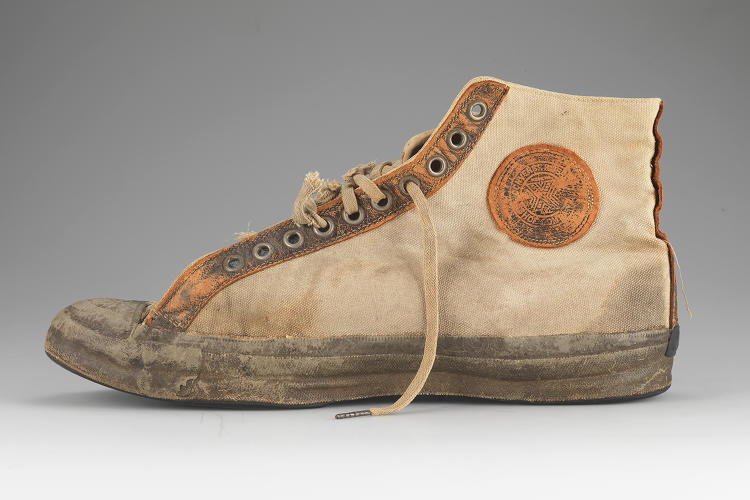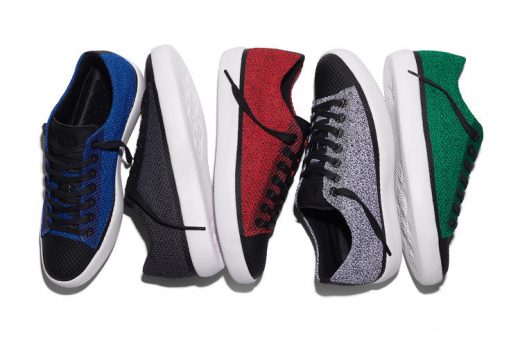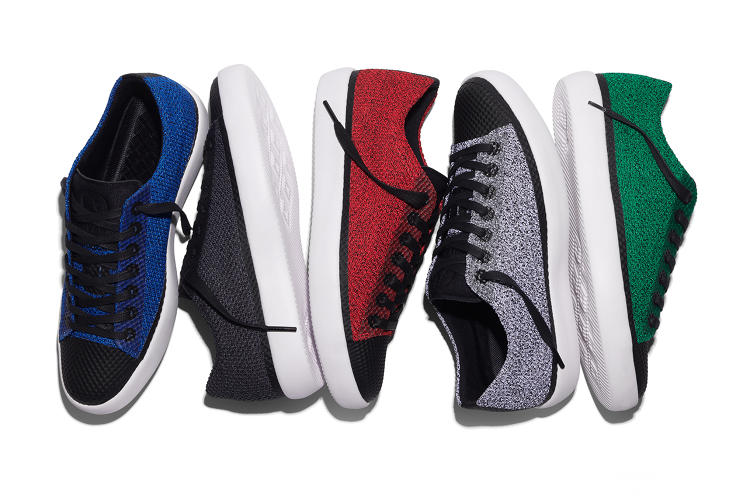Converse Debuts A Totally Reimagined All Star Sneaker
I’m at Converse’s new headquarters, a 10-story building in downtown Boston with spectacular views of the Charles River. This historic space, built in 1907 to house the Submarine Signal Company, was totally renovated before the shoe company moved in last year. At the entrance, surrounded by exposed brick walls and floor-to-ceiling windows, there’s an art installation of Chuck Taylor sneakers hanging from a chandelier. As I’m about to discover, this fusion of heritage with modern design has become a hallmark of everything Converse does.

Last year, in the most significant shoe launch since the company was founded in 1908, Converse totally re-engineered its most popular shoe, the Chuck Taylor. With the help of Nike, which acquired the brand in 2003, designers used the latest in fabric and cushioning technology to make the sneaker more comfortable. But in a nifty sleight of hand, they didn’t alter its exterior, so it retains its iconic look, even though it has an entirely new internal construction.
But the Chuck II was just the beginning, meant to kickstart a new era in Converse’s history. “We realized it was going to be the first step of a greater journey,” creative director Bryan Cioffi explains. “We wanted to make technology, modern construction, and high-level design part of our identity.”
On the top floor of the Converse building, Cioffi showed me the next big product on the company’s roadmap. For 18 months, his team has been putting a spin on another classic: the All Star, which was first introduced in 1920. This time, however, Converse has given the shoe a bold new look. It still has the same iconic shape, but it’s a totally futuristic interpretation of the shoe, designed with clean, minimalistic lines: a simple black toecap, a black round patch at the ankle, black eyelets for the black laces, black studs. The only color—red, green, blue, white, or black—comes from the upper that is not made from canvas, but from a high-tech knit material that feels both soft and sturdy. The most remarkable thing about them is how light they are; they feel like they might blow away with a gust of wind.
I wasn’t able to try on a pair to see how they feel on your feet, but Cioffi asserts that they were designed for comfort. While the original All Star had an entirely flat footbed, this new version has molded, cushioned arch support. “We wanted to aim for something you could wear all day and never get fatigue,” Cioffi says. “Something you wouldn’t want to kick off your feet as soon as you come through the door.”
The Converse Archive
To truly understand the All Star Modern, as the new shoe is called, it’s important to learn about the original All Star sneaker. And to do that, I pay a visit to Converse’s in-house historian, Samuel Smallidge.
The Converse archives are housed in the Schrafft’s building, another historical Boston landmark that was built in 1928 to be a candy factory. In a dark, cavernous, climate-controlled room, Smallidge shows me shelves full of Converse paraphernalia: old posters, shoes, magazine advertisements, sports yearbooks, catalogs. From this neatly organized collection, he pulls out an original 1920 All Star shoe.

Yellowed with age, the shoe is constructed with a heavy rubber base and toecap, recalling the days when Converse specialized in rubber shoes. At the time, basketball was still in its infancy; it was invented only a few miles away in Springfield, Massachusetts, in 1891. In a stroke of genius, Converse’s founder got in early on the basketball trend by designing a shoe for kids who were keen to learn the sport. He marketed the shoe by sending basketball coaches into high schools to teach students how to play, providing the perfect context to sell them shoes. Chuck Taylor was the most popular of these coaches. But before Converse named a sneaker after him, it created the All Star. “This was the shoe that Taylor wore that made him want to partner with Converse,” Smallidge explains.
Picking up the clunky century-old shoe, it’s hard to imagine anyone playing basketball comfortably in them. “It’s kind of crazy to think about them as performance shoes,” Smallidge says. “Back then, every little part of the shoe had a very specific purpose. If you think about how much Nike invests in innovation, we were doing the same thing back then around canvas basketball shoes.”
The iconic elements that make the All Star fashionable today were designed to be entirely functional. The rubber toecap protected your toes, the iconic round patch lessened the impact on your ankles when your feet banged into one another, the metal eyelets prevented the laces from putting tension on the canvas, the rubber base provided traction and was reinforced in places that were most likely to get worn out on a basketball court.
“The thing that we loved about the story of the shoe is that every single thing was considered,” Cioffi says. “In the early 1920s, it was the most innovative, best-in-class material that you could possibly use. The team that designed the All Star Modern put themselves in that mind-set.”
The Modern Urban Dweller
Inspired by the story of the 1920s All Star, the Converse team imagined what a technical, high-performing shoe would look like today. But instead of an audience of athletes, the All Star Modern is designed for the typical Converse consumer: modern city dwellers who are on their feet all day. Cioffi says that these sneakers fit into the larger athleisure trend, as people wear more comfortable, sportier clothing throughout their lives, from going to work to relaxing on the weekends. The Converse designers wanted to use the most advanced technologies on the market to create a shoe for a 21st-century urban lifestyle.
For Cioffi, one of the most interesting parts of this project was figuring out where to be creative and where to be restrained. He wanted the shoe to be reminiscent of the original version, but to look and feel cutting edge. They chose a circular knit cotton fabric that is tear-resistant and breathable. Instead of using rubber for the base and toecap, they’ve used a lightweight plastic. Rather than using heavy metal eyelets and grommets, the team relied on Nike’s Hyperfuse technology to bond plastic to the cotton. On the inside, the team used a Nike-designed foam material called Phylon that is meant to cradle the foot. “That was one of the major weight-reduction pieces,” Cioffi says. “We took out all the layers we didn’t need and combined things so that the shoe would be as light as possible.”

While Converse has had access to Nike’s innovation lab since the 2003 acquisition, this is the first time that the two companies have collaborated from start to finish on a new product. To launch the collection, a creative team at Nike consisting of Hiroshi Fujiwara, Tinker Hatfield, and Mark Parker (or HTM) designed a limited-edition All Star Modern sneaker that is even more minimalistic than the general release models. While they have the same form, they are made of goat leather and are designed from top to bottom in either white or black. This is the first time that the HTM team has designed a product outside of the Nike brand, and this Converse branded shoe will appear at NikeLab retail stores. The HTM shoe will be available on June 9 for $180, and the All Star Modern will be available on June 16 at $140 for the high top and $130 for the low top.
“We wanted people to take one look at this shoe and know it was Converse immediately,” Cioffi says. “No one else can really marry heritage and innovation like this.”
Watch the history of Nike in 3 minutes
Converse has reimagined the All Star, which was first created in 1920. The All Star Modern debuts today.

It’s a totally futuristic interpretation, designed with clean, minimalistic lines.

A Nike creative team called HTM designed a limited-edition version of the All Star Modern.

The original 1920s version was designed to be a high performance shoe for basketball players.

Fast Company , Read Full Story
(64)



